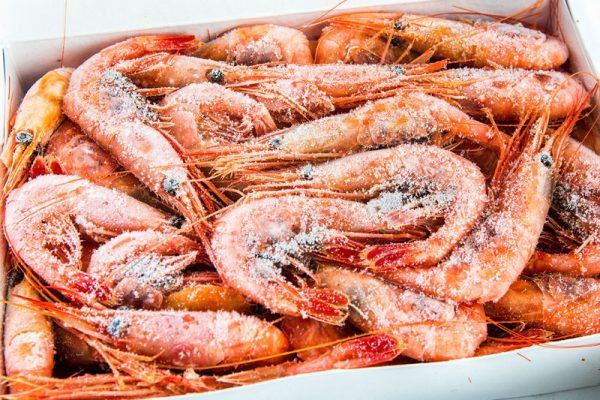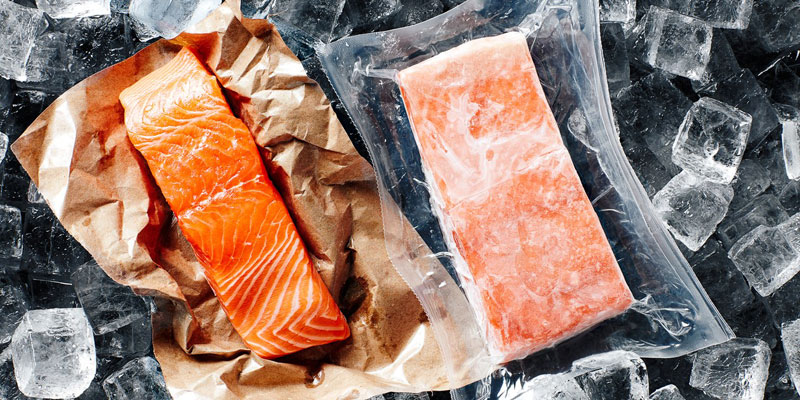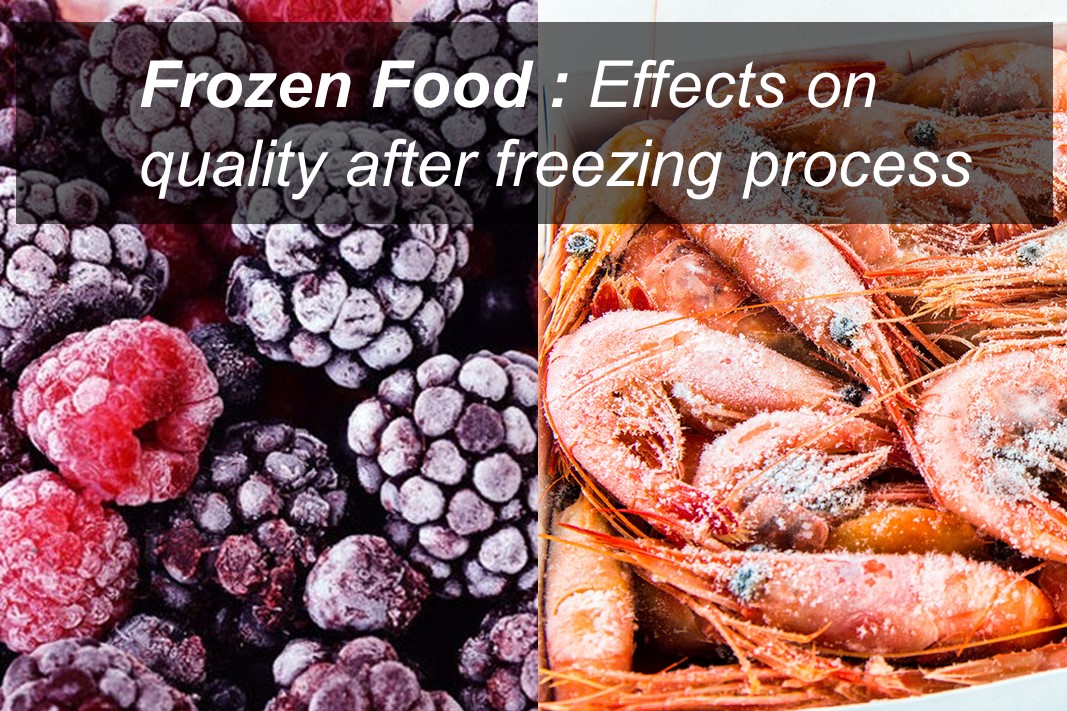

1. Dehydration
Moisture migration is the principal physical change occurring in frozen foods caused the meat tissue undersirable appearance, discolored parched, dry, and tastedless. Theses called “Freezer brun”, which can be protected by tightly wrapped or keeping foods in a closed container.
2. Rancidity
Rancidity is resulting from lipid oxidation. Saturated fats that found in beef and lamb are more resistant to rancidity than unsaturated fats such as pork. An effectiveness of preservative (rancid antioxidant) using in frozen meat products not as yet has been confirmed. Nevertheless, covering the skin or packing it in a closed container can prevent oxygen permeability that can slow down rancidity.
3. Microorganism
Most bacteria do not grow at temperatures below the freezing point, except for certain type of yeasts, which can grow at temperatures below 15 F degree, if the food is not in a frozen phase. Bacteria generally needs water for a living, rather than mold and yeast. Bacteria cannot grow where the water becomes ice crystals. Freezing for a long time, thawing and refreezing can kill growing bacteria; however, its spores are not destroyed. The amount of microorganisms’ presence in the food affects the shelf life of the food. The less microorganism the longer time the food can be stored.
4. Enzyme
Enzymes can work slowly at the temperature of frozen food. Some enzymes can operate at temperatures as low as -100 F degree. Therefore, freezing temperatures can only slow down the enzyme activity. To control the reaction of the enzyme, different technique other than chilling must be applied.
5. Parasites
Freezing can be useful for meat products in destroying certain parasites. This method is the most effective for Trichinella spiralis. They all we be killed, if the pork is kept at 0 F degree.
6. Nutrition
The freezing process does not degrade nutrients. The lower the temperature the more stable the foods. Frozen foods lose their nutritional value mostly in pre-frozen food processing. Packaging helps to protect against the loss of many nutrients, especially vitamins. However, the nutritional values of frozen foods below can be changed.
Vitamin :
Vitamin B1 can be disintegrated by heat. It is then destroyed by blanching and deteriorated some during storage. Vitamin B2 has a minimal loss from preparation and freezing processes. Thawing is another step that leads to loss of vitamins dissolved in water.
Protein :
Freezing processes may cause denaturation of protein, but it does not change the nutritional value of the protein.
Fat :
Frozen food containing high fat can be oxidative rancidity. Pork is rancid after storage at 0 F degree for 6 months. Frozen beef, however, is still in good quality when preserve at very low temperatures for 2 years, such as at -30 F degree helping in slower rancidity.

Storage and the Use of Frozen Food
The temperature of the freezer affects the duration of food storage. The lower the temperature, the longer it will preserve the food. For freezing, temperatures should be set below -18 C degree (0 F degree). For a home refrigerator that separates the door between the chilling compartment and the freezer, the temperature in the freezer is usually below -15 C degree. For the refrigerator with no separated freezer door, the freezer compartment will have a higher temperature, which cannot keep frozen foods that long.
Handling of Frozen Foods Guidelines
1. When buying frozen food; put frozen item in the freezer as soon as possible. Do not wait until it thaws out because when the juice release from the food, the taste and nutrition will also begin to deteriorate.
2. The best way to defrost (thawing) before cooking is to take the food from the freezer to the bottom fridge. Even if that takes a long time, it’s better than thawing outside the refrigerator. Seeing that the temperature outside the fridge is higher that causes the rapid growth of microorganisms. The food then becomes rotten easily. Thawing by pouring water over the food is not equally recommended since the water will take various tastes and nutritional substances away.
3. Home freezing, proper amount of frozen foods for consuming each time should be kept in a container individually. The defrosting food must be used up at one time. Do not thaw and the freeze again as that cuse of water and nutrients loss
Source : Food focuss Thailand Magazine, May 2018 Vol.13 No.146, ISSN 1905-3487




